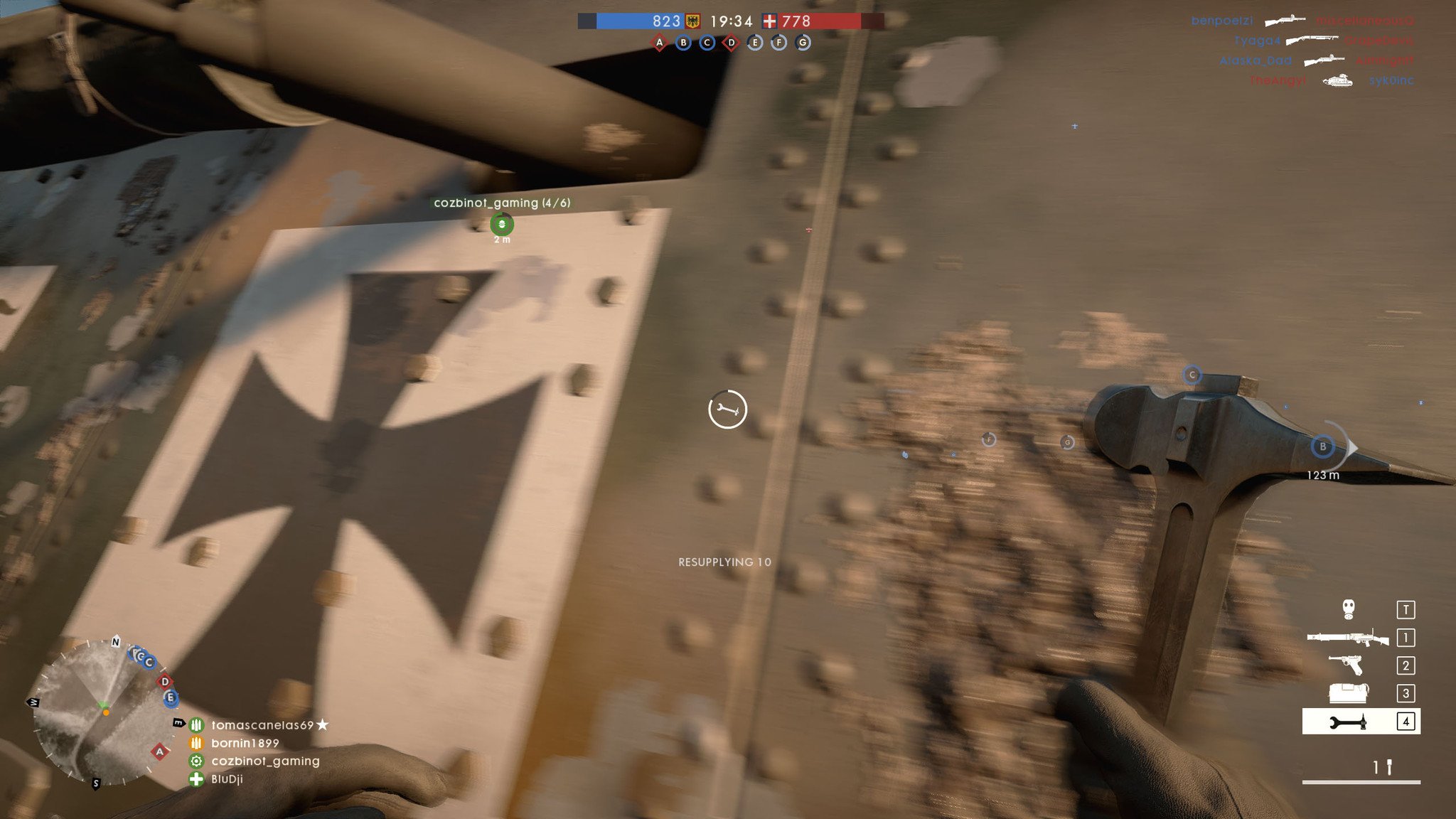
The support class in Battlefield 1 is an essential part of the team, right up there with medics. It's your job as a support player to give ammo, repair armor and vehicles, and provide much-needed mortar support over positions that are heavily entrenched. Here's how to get the most out of the support class in Battlefield 1.
Support class basics
There are a few things that every support player should remember no matter what map they're playing on or what loadout they're using.
Give lots of ammo
Your primary job is to supply the team with ammo. There's nothing more annoying than running out, standing beside a friendly support player and having them ignore you while you spam the 'Ammo needed' button.
Whenever you see some friendly troops, whether or not they've already requested ammo, toss some down. You'll get more points, and your team will love you. Also, keep an eye on your minimap to see where friendly units have requested ammo.
Use mortars on heavily defended areas
Is your team having a hard time taking an objective? Time to switch one of your gadgets over to a mortar.
You have two options: high-explosive and airburst. High-explosive mortar rounds land on the ground and can do damage to vehicles and infantry, but you have to be very precise. Airburst mortar rounds explode in the air and do damage to infantry over a wider area.
Shoot a lot of bullets
The primary weapons available to the support class are light machine guns (LMGs). Many of them have a large magazine that allows for continuous fire.
All the latest news, reviews, and guides for Windows and Xbox diehards.
Most other guns in the game punish holding down the trigger with wicked recoil. LMGs actually get more accurate the longer you fire, so don't be afraid of getting a little trigger happy. You can always replenish your own ammo supply with a pack.
Repair vehicles
If your squad is planning on jumping into a tank, don't forget to equip the repair tool. Without it, you'll be at a serious disadvantage.
When taking damage from afar, it's not a bad idea to hop out of the vehicle, position yourself on the side not taking damage, and get to repairing. This allows the driver to continue firing and driving, whereas the driver repairing from inside requires the vehicle to cease all other operations.
Ideal loadouts
There are plenty of combinations to choose from when building a loadout. Here are a few loadouts based around certain playstyles!
Bunker buster
The nature of trench warfare means your team will come up against some heavily fortified positions. Instead of throwing infantry at the position and losing plenty of tickets, the support class should whip out their mortars and soften up the enemy. Position yourself behind cover, but don't get too close — you don't want the mortar rounds hitting anything and blowing up as soon as they're out of the tube. It will take some getting used to, but figuring out appropriate distances will help you decide where to set up.
Primary: You won't be doing much up-close fighting, so take whatever you want.
Sidearm: Take whatever you're most comfortable with, but a long-range pistol is never a bad idea. The No. 3 revolver is a good choice.
Gadgets: If the enemy team has armor on the objective, take the HE mortar — if they have infantry only, go with the airburst mortar. Also, grab an ammo crate to resupply yourself and teammates.
Grenade: Smoke grenades will help you get a way if a sniper spots you from across the map.
Tanker
Every good tank crew needs someone who can repair their machine. Having a full squad inside of a tank with everyone working together is a great feeling and you'll rack up quite the score if you communicate well and play smart.
Primary: The MG15 n.A. is a great weapon, as is the BAR M1918 Trench variant. Keep in mind you'll need it only if infantry gets too close and you have to hop out of the tank to defend.
Sidearm: Take whatever you're comfortable with, but the P08 is a great pistol.
Gadgets: You definitely want the repair tool here, and you can either go with the limpet charge for blowing up enemy vehicles or the ammo crate if you think you might move to infantry support at some point after the tank is gone.
Grenade: Smoke grenades will give you and the tank cover if you need to repair or escape.
Frontline support
There are many opportunities in Battlefield 1 for your team to attack a position as a whole. You'll see medics reviving and healing, assault players launching explosives, snipers keeping the flanks clear, and support units offering, well, support. Bring ammo, bring grenades, and bring a gun with a big magazine.
Primary: The MG15 n.A. Suppressive will be your best friend. It has a 100-round magazine, great control and accuracy, and does decent damage.
Sidearm: Take whatever you're most comfortable with. A suggestion? Try the P08.
Gadgets: Bring an ammo crate to resupply friendly soldiers, and also bring limpet charges. These magnetic explosives can be attached to a vehicle and will detonate automatically after a few seconds.
Grenade: Frag, impact, or incendiary grenades will do plenty of damage to enemy infantry units.
How do you play?
What is your favorite support loadout? Which primary gun have you been most successful with? Let us know in the comments section below.

Cale Hunt brings to Windows Central more than nine years of experience writing about laptops, PCs, accessories, games, and beyond. If it runs Windows or in some way complements the hardware, there’s a good chance he knows about it, has written about it, or is already busy testing it.






